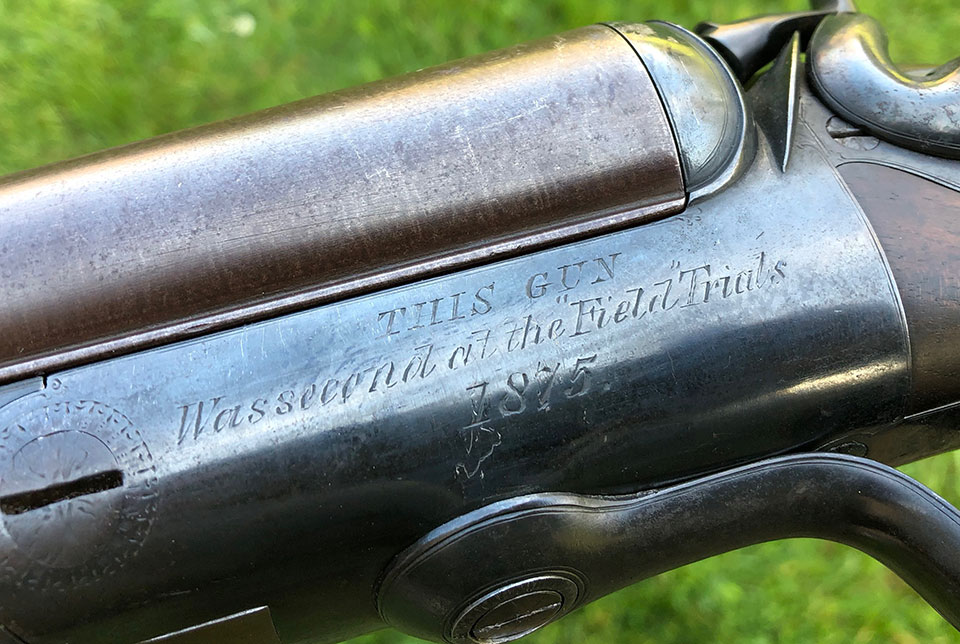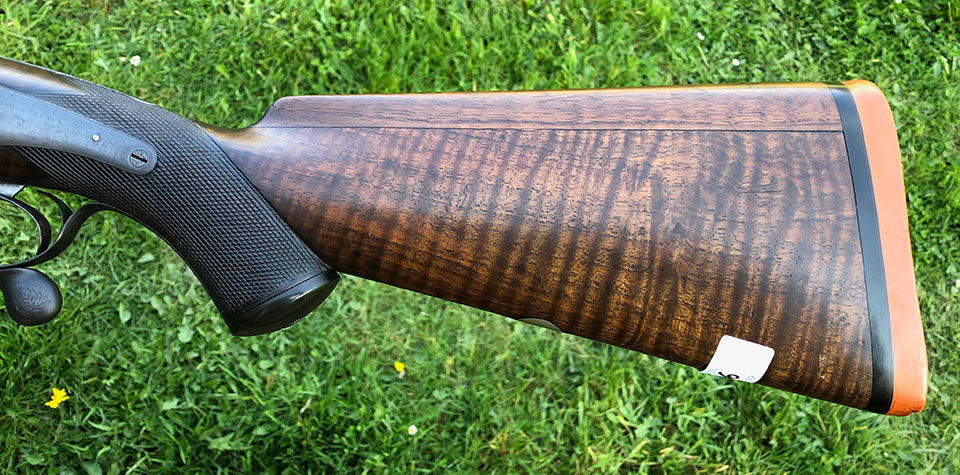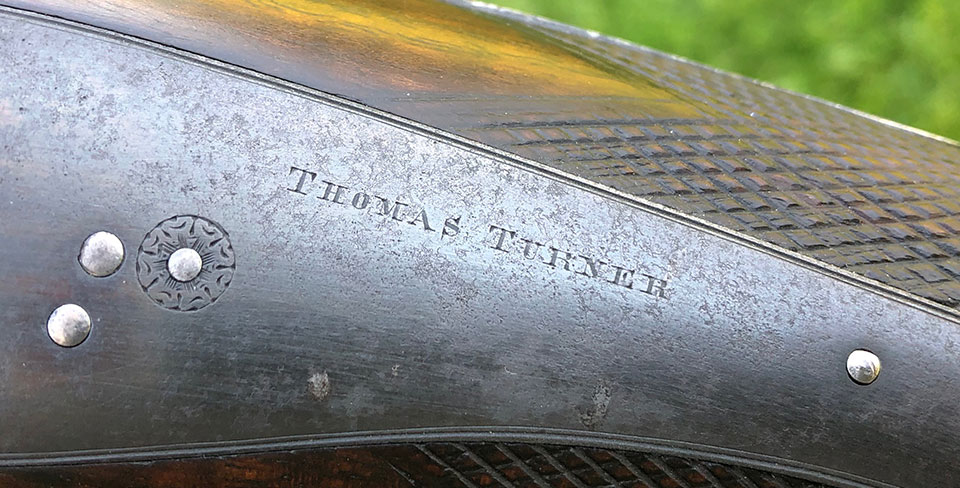The term ‘Field Trial’ today evokes images of gun dogs competing for accolades. However, the origins of the term stem from gun tests conducted under the auspices of the editor of The Field magazine, John Henry Walsh. During the second half of the nineteenth century, several such trials were held. They were prompted by heated letters to the editor either espousing or rubbishing various claimed improvements in sporting gun design.
Mr Walsh, tiring of the, often acrimonious, savaging of one another by his readers over these issues (many of the letter writers were gunmakers) decided to put himself forward as a neutral arbiter and devised trials to determine, objectively, the veracity of the various claims.
Probably the most influential of the shotgun ‘Field Trials’, as they became known, were the 1858/9 trials to determine whether breech-loaders were safe and effective when compared with muzzle-loaders and the 1875 trial to test the effectiveness of choke-boring over cylinder-bored guns.
Here we are interested in the latter, because I happen to have one of the guns that featured in that trial in my gun room right now. But before we look at the gun, some background to the trial in which it competed.
Choke-boring (narrowing the bore at the muzzle to make patterns tighter) was pioneered, in the first half of the century, in the United States, by several gunmakers. W.R. Pape, of Newcastle, lodged the first reference to it in a British patent (1501 of 1866), stating ‘By this improved construction of bore, stronger and closer shooting will be acquired…’
However, Pape never made much fuss about his new patent and it wasn’t until 1874, when W. W. Greener started testing choke-bored barrels in his guns that any momentum picked-up (Pape had not renewed the patent protection in 1873). Greener was a far more savvy marketer than Pape and he wasted no time getting samples of his choke-bored guns to Mr Walsh, at The Field.
Walsh inspected Greener’s guns and told readers that Greener was now taking orders for 12-bore guns which could put 210 pellets of No.6 shot in a 30 inch circle, using 3 drams of powder. This drew a flurry of letters from those readers, many questioning the veracity of the claimed patterns or the safety and durability of choked barrels. So, Walsh decided to organise an event at which gunmakers could bring their guns; either choke-bored or not and see whose gun shot with the tightest patterns and best penetration.
The trial was held at The Croquet Club in Wimbledon on 26th April 1875. Three classes were open: 8-bore, 12-bore and 20-bore. Pape cheated by sneaking more shot into his cartridges in hollowed-out wads. However, Greener (using barrels bored by master barrel maker William Ford) won all three choke-bore classes. The effectiveness of choke was established. Another trial that year confirmed that choke-bored barrels suffered no appreciable wear or change in pattern over prolonged use (2,500 shots).
The one 12-bore class Greener did not win was the ‘English-bore’ class, which Thomas Turner won, with a barrel constricted by five thou’ (in effect modern Improved Cylinder). Turner also did well in the 8-bore class, coming in second place. That 8-bore is the gun now in my possession.
It has undergone some changes since it was submitted for trial all those years ago.The barrels have been shortened to 31 3/4” and re-browned several times, though still carry proof marks only for black powder. The pistol-grip stock has been altered to make a new comb profile and has been fitted with a rubber butt pad.
The blued action is a Jones-under-lever with rebounding back-locks; and it clearly originated at W&C Scott, as it is stamped with the Scott trade mark of a tower. Weight is 10lbs 3oz. The bar of the action is engraved ‘This Gun was Second at the ‘Field Trials 1875’.
Thomas Turner, born in 1805, started his career as a barrel maker, which may explain why his guns did well at the Field Trials.
He was a Birmingham gunmaker, whose business closed in 1912 and was not related to the Reading gunmaker of the same name. He also had premises in London from 1884-1893.
The gun itself is quite unremarkable but it reminds us of the frenzy of development that took place during the nineteenth century and Mr Walsh’s attempts to record, encourage and verify the benefits each major improvement achieved, as it became a point for discussion amongst sportsmen.
The letters pages of the Field at this time reminds me somewhat of modern internet forums; the egos are apparent and no holds barred in denouncing opponents and rubbishing their claims, in the strongest possible terms.
Published by Vintage Guns Ltd on




